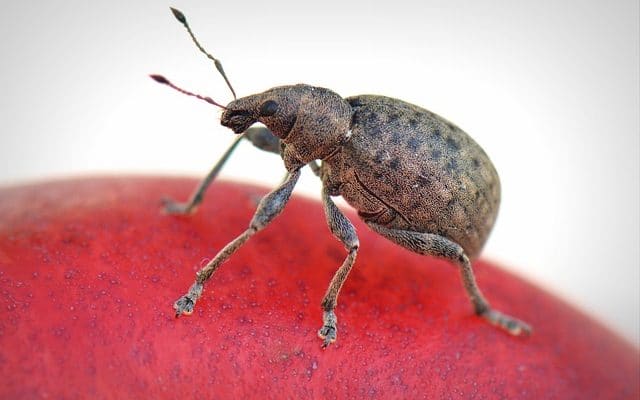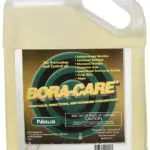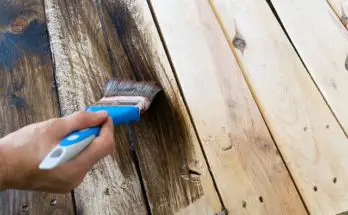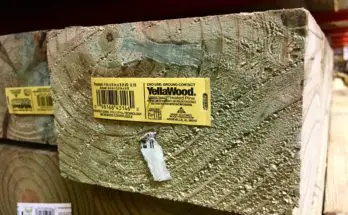The use of barn wood and reclaimed wood for home projects and decor has become incredibly popular over the past decade and shows no signs of changing in the near future. Using reclaimed wood for these projects gives it a look that can’t be replicated using any other methods. It’s also gives this old growth wood new life rather than just bulldozing these old structures and burning the wood.
Before using reclaimed wood for your next project, there are steps that you should take to ensure the wood you are using has been completely rid of bugs. Below are steps that you can take to ensure the wood you are putting into your home is bug free!
For additional information on what you need to check your reclaimed wood for before putting in your home, please check out my article here.
What Bugs Live in Wood
There are many types of bugs that can live in your reclaimed wood that you need to be mindful of. Below are the most common along with signs that you have some in your wood.
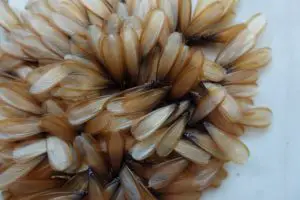
Termites – This is the insect most people think of when you mention having wood damage caused by an insect. It’s estimated that termites cause more than $5 billion worth of damage to homes in the United States each year. On average, once you have termites, it will cost around $3,000 to remedy the problem. Keep in mind, that’s the average, and the cost can climb significantly depending on your situation.
There are well over 2,000 different types of termites, and interestingly, each specifies has a different appetite for what they like to feed on.
Generally, though they like warm and humid environments the most.
Fortunately, there are signs that you can look on your reclaimed wood to see if there are any indicators that termites are already present. Some of those signs include:
- Discarded wings around the wood that have been shed by some of the workers termites.
- Mud tubes that have openings about the size of a pencil
- The appearance of insects that look like white ants – these are actually living termites
Carpenter Ants – The damage caused by carpenter ants can closely resemble the damage that is caused by termites. Symptoms of these insects are very much the same as the termites. To see if the wood has infestation, look to see if there are wings present on the wood. In addition, the ants will create tunnels within the wood to travel. They prefer moist wood, especially if mold has already begun growing on it.
Beetles – These insects may be the least likely to come to mind when thinking about bugs that could be living in the reclaimed wood that you just purchased. There are many types of beetles and each type of beetle is attracted to different types of wood. In fact, some beetles are attracted only to the sapwood of hardwood lumbers. The concerning thing with beetles is that they can remain dormant inside of your wood for up to 10 years before hatching!
One of the easiest ways to determine if the wood you have could contain Powderpost Beetles, is by looking for tiny holes spread throughout the wood. When females are ready to lay their eggs, they chew tunnels into the wood in order to lay their eggs. Upon hatching, the beetles crawl out of these holes.
Kiln Dried Wood
The easiest way to avoid bringing any wood into your home that has any type of insect infestation is to only purchase wood that has been sent through a kiln. Kilns are used in the lumber industry for a couple of reasons. Due to the moisture that can be held within lumber, it’s important for woodworking to only use wood that has been dried and had most of the moisture within it, removed.
When wood is being dried, it will shrink considerably. This is why the wood that you purchase at a big box store is never the size that it states. For instance, a 2×4 is never that exact size. Instead, it is typically 1.5″ by 3.5″. This is due to the wood drying and shrinking from it’s original state.
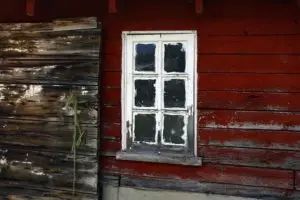 The second reason wood is sent thru a kiln is to kill the insects that may be living within it. On average, lumber is held in kilns that reach a temperature of 140 degree Fahrenheit. It can be held in the kiln for several weeks depending on the current moisture levels and where the end moisture content needs to be. Holding the wood at these temperatures for this amount of time is certain to kill any bugs within your wood.
The second reason wood is sent thru a kiln is to kill the insects that may be living within it. On average, lumber is held in kilns that reach a temperature of 140 degree Fahrenheit. It can be held in the kiln for several weeks depending on the current moisture levels and where the end moisture content needs to be. Holding the wood at these temperatures for this amount of time is certain to kill any bugs within your wood.
When purchasing reclaimed wood, make sure to ask if the wood has been sent thru a kiln. Sometimes, you may get told that the wood has been air dried to help remove the moisture. Though this is helpful to avoid the wood shrinking, it does NOT help with the elimination of the bugs. Taking a moisture meter with you to purchase reclaimed wood could be a general indicator as to whether or not the wood has been kiln dried. Wood that has been properly kiln dried should have a moisture content at or below 12% depending on your geographic location. Anything above those amounts, and it is unlikely that the wood has been dried properly in a kiln.
One thing to keep in mind when looking for a supplier of reclaimed lumber is that those with a kiln typically charge more than those who don’t have one. Since drying the lumber involves more time and labor, these sellers must mark up their prices in order to recoup the costs. In my opinion, this is a valuable service that is being offered and well worth the extra fee.
Do It Yourself Options
Fortunately, there are options available for you if you have wood that has not been kiln dried. In fact, I like to use some of these methods below even if I’m confident the wood has been sent thru a kiln. It’s probably not necessary, but it gives me an additional piece of mind.
Borax – This is one of the most popular ways for eliminating existing wood boring insects from wood. The nice thing about Borax is that is is completely safe for both humans and pets, but it is deadly on insects. Simply scrub your lumber with a mixture of Borax and water and allow it to soak into your wood. This will take care of anything that might be living inside it. Another positive to using Borax is the fact that it will not affect the finish of your wood!
Timbor – This product comes as a white power that is then mixed with water. Once you’ve mixed the two, you then apply it to your wood and allowed it to soak into it. It’s recommended to wait from 48-72 hours for it to completely dry. Two things to know about using Timbor – it only PREVENTS insects from invading and setting up a home in your wood. It will not kill existing bugs. Also, it’s highly likely that your wood will develop a white residue once you use the Timbor product. You’ll need to take extra time to wash it off. You may need to clean a couple times to get it entirely off your wood.
Bora Care – This is my go to option for eliminating the concern for bugs within my reclaimed wood. This product kills existing bugs and fungus but also does an excellent job at preventing it as well. You can pick up this product on Amazon by the gallon which will treat quite a bit of wood! Application is easy, in fact, you can apply it with as little as a paint brush. If you have a larger amount of wood to treat, I would suggest picking up a basic pressure sprayer like this one. It’s much quicker to apply to a large area and it’s easy to store and have ready in the future.
What I like about Bora-Care, is that it comes already mixed, it kills existing bugs, protects it from future infestations and does so with no residues to worry about.
There also an upgraded formula that will help prevent the development of mold. The upgraded version is also available on Amazon. The mold care will be shipped in a separate container along with instructions on how to go about mixing it for your particular situation.
Freeze it – If the wood that you are working with is small, you can place it in a freezer for a few days. The sudden drop in freezing level temps has also been known to kill any insects that might be in the wood. Obviously, this will not work as a preventive for future protection.
Pressure Treated Wood
Since pressure treated wood is infused with pesticides to prevent rotting and bug infestation, it is a common assumption that pressure treated wood is a good choice for reclaimed wood projects to avoid the insect issues. It’s common to find free wood available from individuals who have torn down a deck or privacy fence and are looking to get rid of the old wood.
Pressure treated wood can be used indoors, however, it is NOT considered food safe and should not be used in areas where food preparation takes place. Also, when cutting pressure treated wood, it is extremely important to ensure you do not breath in the dust that is created. This wood contains dangerous chemicals that should not be inhaled. For further information on using pressure treated wood inside your home, please check out my article here.
Thanks for stopping by and checking out my article. If you would like additional information regarding the buying of reclaimed wood, please take a look at my Reclaimed Wood Buyer’s Guide!

